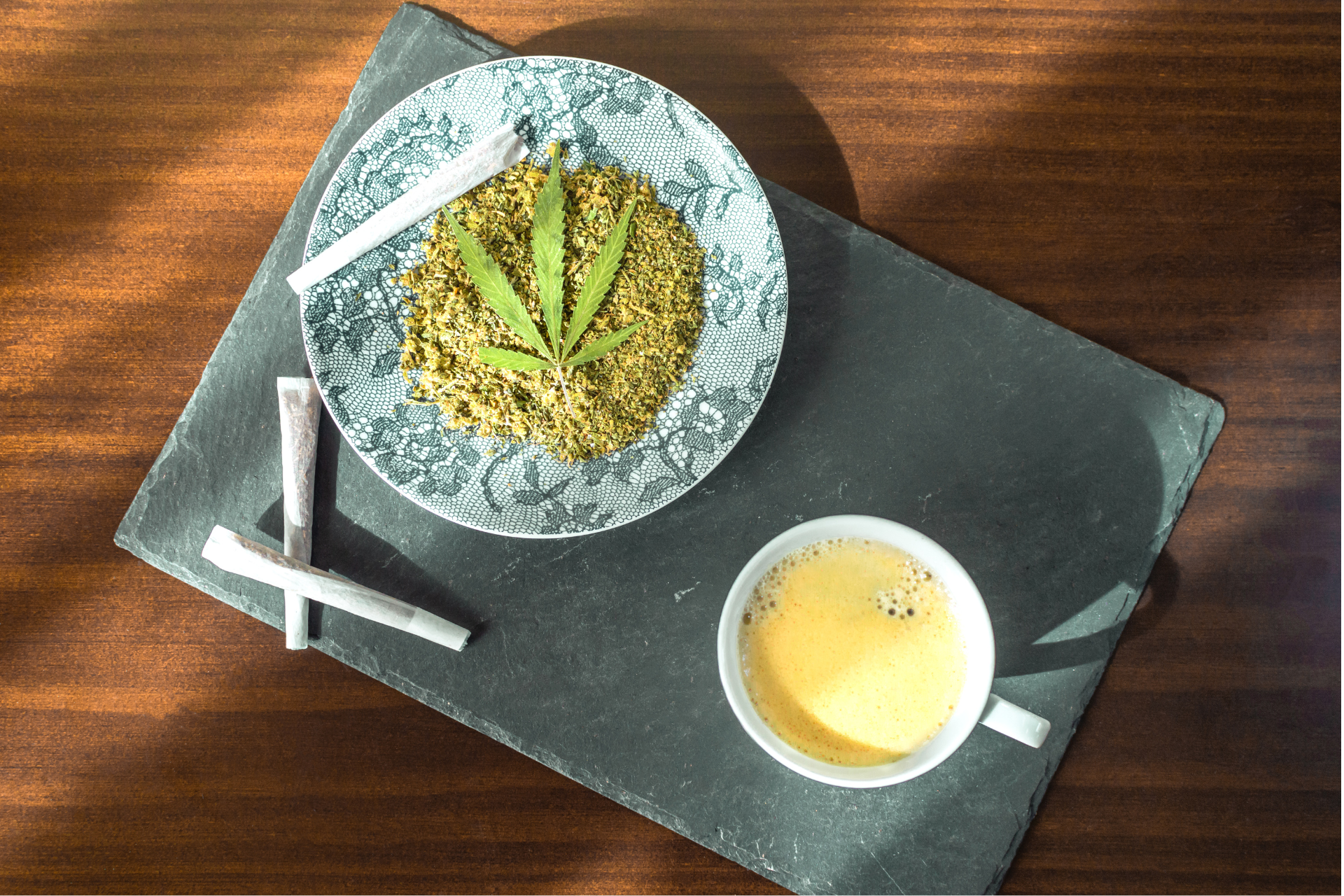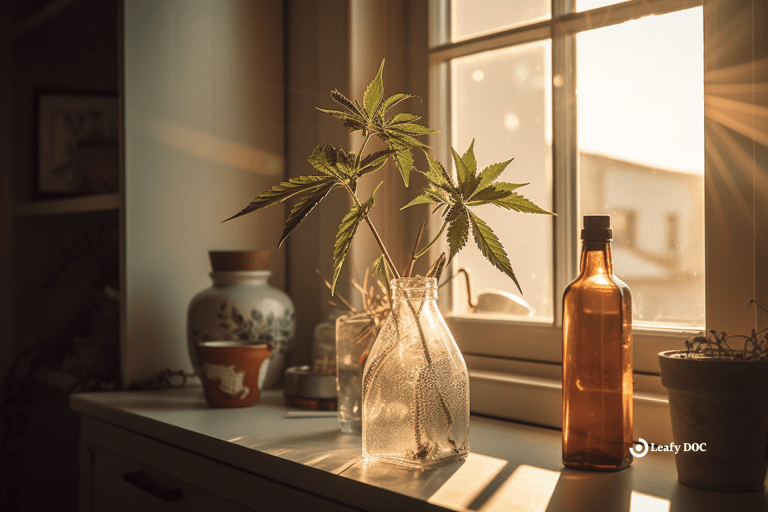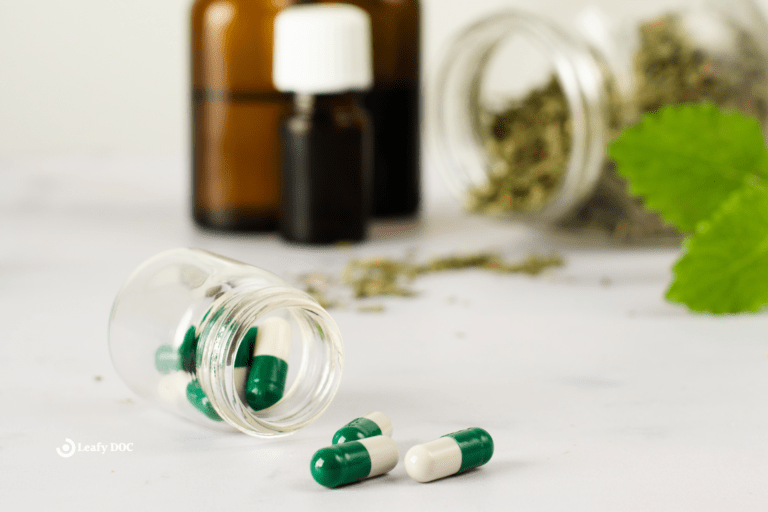Decarbing Your Cannabis 101
by Haley Mills · March 20, 2023
Unlock the full potential of your cannabis! Learn the basics of decarbing, what it means, and how to do it right with our Decarbing Your Cannabis 101 guide.

If you’re interested in infusing homemade edibles, oils, or salves, you’ll want to start with cannabis that has been decarboxylated first. Our article will give you an idea of decarboxylation and its importance. Then, we’ll provide a step-by-step guide for decarbing your weed using several methods.
What is decarboxylation?
Decarboxylation is the process of physically altering the chemical structure of cannabinoid compounds found in raw plants – including marijuana and hemp. Scientifically, decarboxylation means removing carbon dioxide from a compound. The cannabis plant is organically non-psychedelic. This plant material contains high amounts of cannabinoids such as THCAs and CBDA, which form a broad range of cannabinoid acids. To achieve the ‘high’ effect of marijuana, you will have to convert the cannabis to THC through decarboxylation.
Cannabutter and cannabis infused oil is primarily made by decarboxylating cannabis flowers and can be made using various techniques for the infusion process. The cannabinoids that live within cannabis flowers are activated when they are decarboxylated or removed.
Why is decarbing important?
Raw cannabis has no potential for psychoactive effects. Natural cannabis and its derivatives contain cannabinoids THCA and CBDA. When you eliminate A, you’ll find THC and CBD. Without activation, this drug does not cause any intoxicating effects from infused cannabis oil, butter, edibles, or topicals.
How does temperature effect decarbing?
Cannabinoids and terpenes respond to specific temperature ranges during the heating process. Some are activated, changed, or broken down at various temperatures. It is best to decarboxylate cannabis slowly at approximately 230-250°F. THCA converts to THC in that range while preserving beneficial cannabinoids and terpenes that provide flavor and potency.
Should I grind before or after?
It’s ideal to break apart large buds of raw cannabis flower before decarbing. Once you have your fully decarboxylated cannabis, you can grind the buds further.
The Chemistry of Decarbing
Converting THCA into THC is a simple process, but some factors may change the way you are decarbing cannabis, depending on the strain. Below, let’s go over the differences between THC and CBD, cannabinoids and terpenes, as well as flavonoids and phytosterols.
THC vs CBD
If you’re comparing Sativa vs. Indica, the good news is there is no difference in the decarboxylation process. Mostly, there is little change between decarbing with THC or CBD in mind, though CBD carboxylation may benefit from temperatures closer to 230 F.
THC and CBD are the most prominent cannabis compounds, and they have a similar decarbing oven temperature, but it’s important to note the differences below:
- THCA to THC bake at 240° F for 40 minutes
- CBDA to CBD bake at 240°F for 90 minutes
- CBGA to CBG bake at 220°F for 60 minutes
- THC to CBN bake at 240°F for 180 minutes
Cannabinoids and Terpenes
Terpenes give cannabis its unique flavors and aromas. Some terpenes boil at temperatures higher than cannabinoids, but others boil a few degrees above the recommended decarbing temperature of 200ºF – 290ºF. Diminishing these compounds may produce an odd flavor that makes your edibles taste less than fresh.
Flavonoids and Phytosterols
Flavonoids and phytosterols are commonly found in all plants, and cannabis contains a unique variety. They typically have a higher boiling point than cannabinoids.
Ways to Decarb Your Cannabis
Here are a few of the most popular ways of decarbing weed.
Oven
baking your raw weed first is an optimal way to decarb. You’ll want to break up your buds into small pieces and evenly distribute them on a baking sheet with parchment paper. Then, you’ll cover and bake on low heat for thirty minutes. After it cools, you’ll have fully decarbed cannabis.
Mason Jar
Using a mason jar to decarb is a great idea for those who need to minimize odors:
- Set your oven to around 230 degrees Fahrenheit
- Place the oven rack in the middle of the range.
- Cover a baking sheet with parchment paper
- Place a damp kitchen towel over the baking tray
- Put the ground cannabis flower in the mason jar
- Loosely screw on the lid (be careful not to screw it too tight)
- Place the jar on top of the kitchen
- Bake for an average of sixty minutes, watching closely not to burn
- Carefully remove the mason jar from the oven and shake it every fifteen minutes to ensure the cannabis is even
- Let cool for 20-30 minutes before removing the decarbed weed from the mason jar
Sous Vide
Using sous vide immersion circulator or a precision cooker, you can easily decarb cannabis. There’s very little smell, the potency and flavor are preserved, and the temperature is perfectly controlled.
The steps for sous vide decarboxylation are as follows:
- Grind your buds
- Vacuum seal the sous vide bag.
- Fill a medium pot with water. Place the immersion circulator in the pot and set ithe temperature to 203°F. Place the sealed bag into the water for ninety minutes.
- If you don’t have a precision cooker, fill a saucepan with water and boil over high heat. Reduce the heat and use a thermometer to monitor and keep the temperature between 203-212°F. Place the bag into the water for ninety minutes.
- Remove the bag. Use caution as it will be near boiling. Let the bag cool and dry for at least twenty minutes before taking out the flower to use or store.
Organically
Over a long period of time, cannabis will decarb on its own, and the THCA will convert to THC. For example, older weed is typically brown, which is a tell-tale sign of the decarb process. It’s recommended that you use a different method if you plan on using it rather quickly.
What is a decarboxylator?
Decarboxylators automatically control the temperature and time cycles during the cannabis decarboxylation process, so you don’t have to monitor every step of the way. They can be expensive but are convenient and easy to use. Some models require you to place the raw cannabis plant inside and press one button. Some can even make infused butter, oils, and tinctures directly inside.
Is decarbing necessary for infusing with cannabis?
If you don’t, your recipes will not taste ideal and will be less potent because the cannabinoids do not have time to activate entirely. Low heat is the way to go with this process for the best oil and edibles. The quality of your cannabis flower is essential. It can affect the potency and flavor of your finished product. It’s crucial to find a high-quality strain with the desired effects you’re looking to feel.
Edibles are consumed and digested, encouraging the body’s endocannabinoid system (ECS) to do its job after decarboxylation occurs. The endocannabinoid system comprises an extensive network of chemical signals and cellular receptors densely packed throughout our brains and bodies.
The cannabinoid receptors in the brain outnumber many other receptor types in the brain. They regulate the body through immediate feedback, turning up or down the movement of whichever system needs to be adjusted, whether hunger, temperature, or alertness.
Our bodies produce molecules called endocannabinoids to stimulate these receptors, which have a structural similarity to molecules in the cannabis material.
Storing your Finished Products
One of the vital steps to properly store cannabis is using high-quality storage containers. Glass jars with a tight seal are ideal for protecting your buds from humidity, parasites, climate issues, and mold. There are even jars with a UV-proof finish or a violet/dark brown tint to further protect your weed from the light.
A proper cure will ensure that your cannabis plant will last longer, and they will maintain their flavor and potency longer as well. Humidity packs can help ensure humidity levels remain ideal for storing buds to keep the weed fresh.
Store buds and cannabis edibles in airtight containers. Tinted mason jars are perfect airtight jars for storing cannabis after the curing process. Plastic bags risk drying and losing the potency of your cannabis buds. Maintain a dark space with a cool temperature for optimal storage of decarbed cannabis in an airtight storage container to help the weed stay fresh and potent for longer.
In Conclusion
There are various ways to decarb cannabis before using it to infuse different products; the important part is completing this vital chemical reaction before using it. Or, you’ll have a pretty weak and tasteless bud on your hands. Check back with Leafy DOC soon for more tips on frequently asked questions among the medical cannabis community.
Last Updated: August 8, 2024
Get Approved for Your Medical Marijuana Card in Minutes!

Get Your Medical Card
Connect with a licensed physician online in minutes

Like This Article?
Share with your friends
Table of Contents
Keep Reading
-
Enhancing Radiation Therapy With Cannabis
Unlock the Power of Cannabis: Enhance Your Radiation Therapy for Better Cancer Treatment! Click here to discover how cannabis can potentially improve the effectiveness of radiation therapy and revolutionize your cancer treatment journey.
-
Medical Marijuana VS Antidepressants
Uncover the truth about Zoloft and marijuana: Which is more effective for treating mental health conditions? Explore the surprising benefits of medical marijuana and make an informed decision for your well-being. Click here to discover the answers now!
-
Medical Marijuana vs. Prescription Medications: Pros and Cons
Compare the pros and cons of medical marijuana vs. prescription medications. Learn about the potential benefits and drawbacks of using cannabis for treatment.



